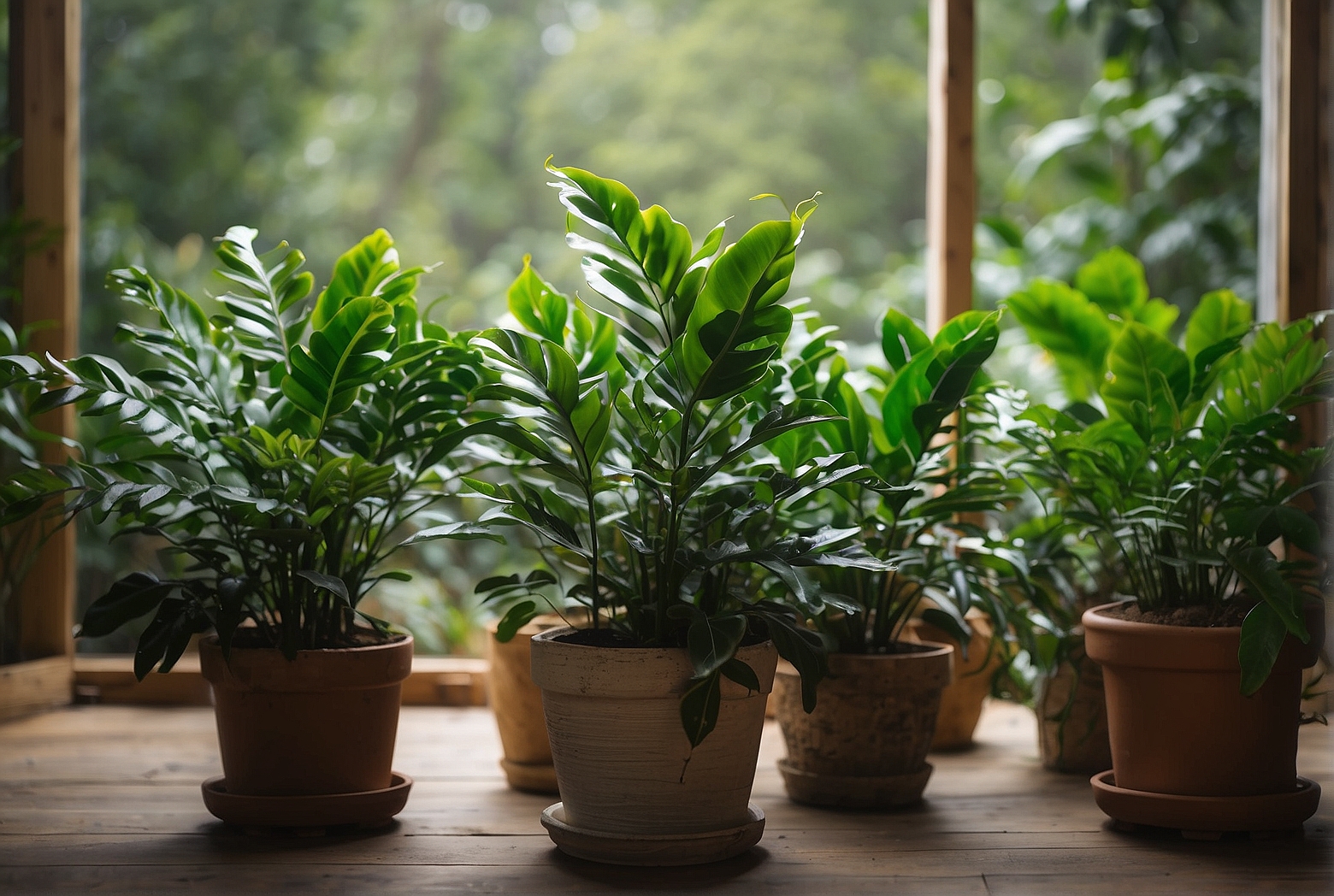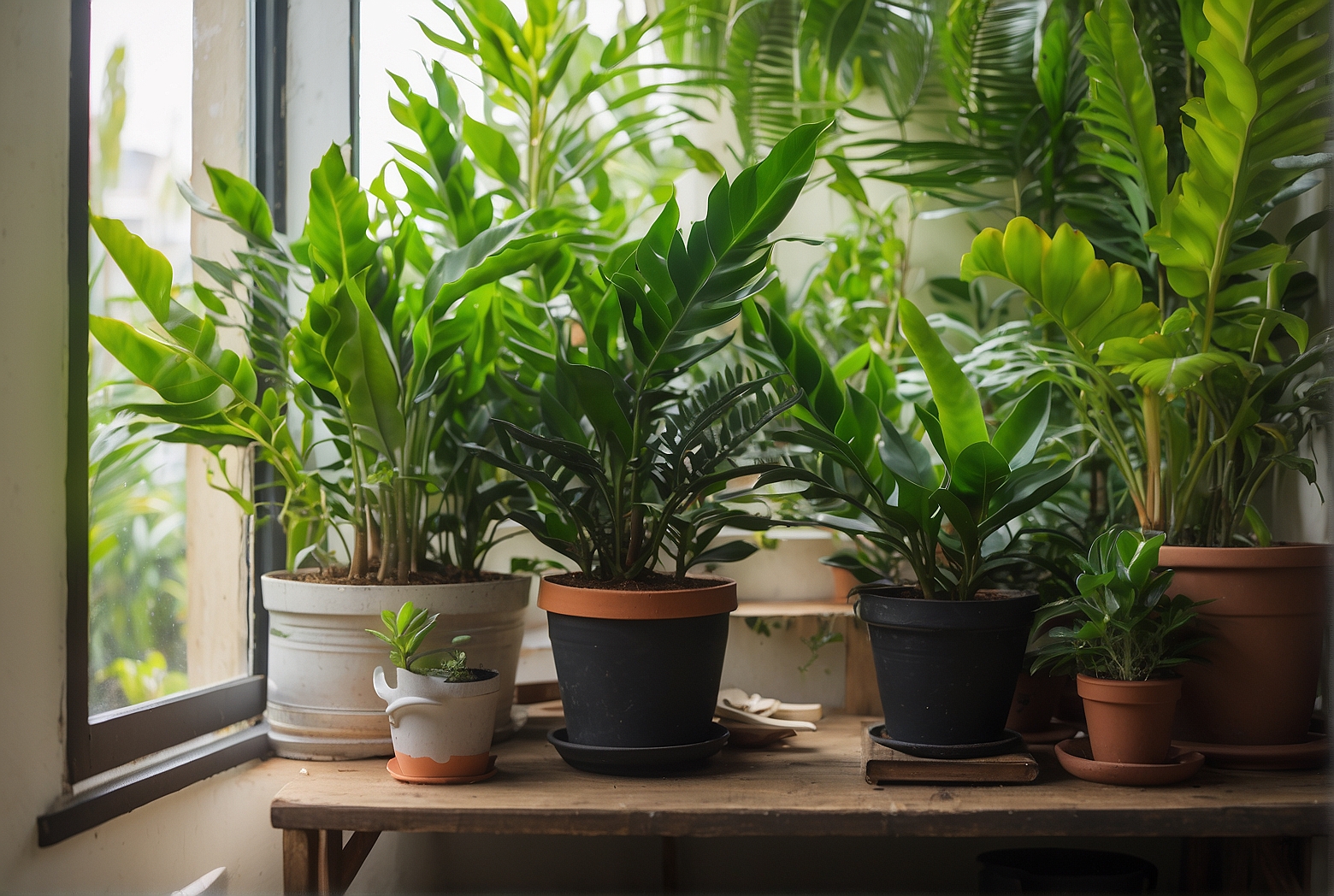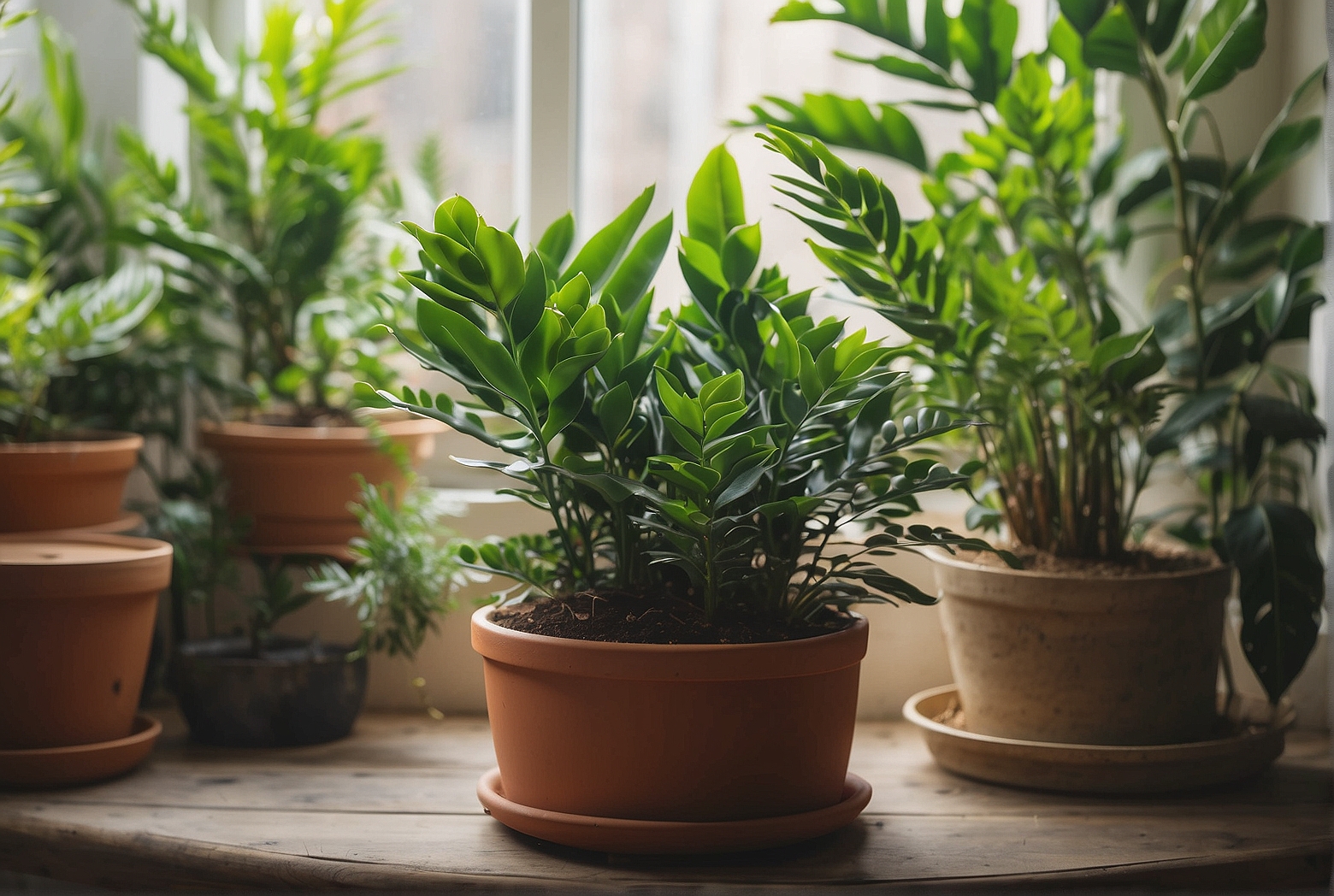Last Updated on April 6, 2024 by Tony Manhart
If you’re an aspiring plant parent or a seasoned green thumb, you may have heard about the ZZ plant. Its glossy leaves and low-maintenance nature make it a popular choice for both indoor and outdoor environments. But how do you know which environment is best for your ZZ plant? In this article, we’ll explore the factors you need to consider when choosing the right environment for your ZZ plant, whether you want to keep it indoors or let it thrive in the great outdoors. So, grab your gardening gloves and let’s find the perfect spot for your ZZ plant to flourish!
Lighting Requirements
Low to moderate light conditions
The ZZ plant is a fantastic option for those who love houseplants but don’t have a lot of natural light in their home. It thrives in low to moderate light conditions, making it a perfect choice for various rooms in your house. You can place it in the corner of a room or on a shelf where it will receive indirect sunlight.
Filtered sunlight
While the ZZ plant can tolerate low light conditions, it can also benefit from some filtered sunlight. Placing the plant near a north or east-facing window will provide it with the right amount of bright, indirect light without exposing it to the harsh rays of direct sunlight.
Avoid direct sunlight
Although filtered sunlight can be beneficial, it is crucial to avoid direct sunlight. Direct sunlight can scorch the leaves of the ZZ plant, leading to damage and discoloration. To prevent this, keep it away from south or west-facing windows or use curtains or blinds to filter the sunlight.

Temperature Range
Ideal range is 60-75°F (15-24°C)
The ZZ plant thrives in a temperature range of 60-75°F (15-24°C). This temperature range is comfortable for most indoor environments, making the plant a great addition to your home. Ensure that the temperature remains within this range to promote healthy growth and prevent any stress on the plant.
Can tolerate temperatures as low as 45°F (7°C)
While the ZZ plant prefers moderate temperatures, it can tolerate slightly cooler conditions. It can withstand temperatures as low as 45°F (7°C) without any significant harm. However, it is advised to provide extra protection or move the plant indoors if the temperature drops below its preferred range for an extended period.
Avoid extreme temperature fluctuations
While the ZZ plant can handle moderate temperature variations, it does not appreciate extreme fluctuations. Sudden temperature changes can cause stress and negatively impact the overall health of the plant. Try to place the ZZ plant away from drafts or areas with drastic temperature shifts, such as close to heating or cooling vents.
Humidity Levels
Adaptable to various humidity levels
One of the wonderful characteristics of the ZZ plant is its adaptability to different humidity levels. Whether you live in a humid or dry climate, this plant has the ability to adapt and thrive in a wide range of humidity conditions. This makes it a versatile choice for various environments and ensures it can thrive in your home.

Prefers moderate humidity
While ZZ plants can adapt to different humidity levels, they do prefer moderate humidity. If the air in your home is particularly dry, using a humidifier or placing a tray of water near the plant can help to increase the humidity around it. Regularly misting the leaves with water can also provide a boost of moisture for the plant.
Can tolerate low humidity conditions
If your home has low humidity levels, don’t worry! The ZZ plant is still a suitable choice. It is known for its ability to withstand dry conditions. Just ensure that you don’t let the soil completely dry out and monitor the plant for any signs of stress or dehydration.
Watering Frequency
Allow the top inch of soil to dry between waterings
When it comes to watering your ZZ plant, it is important to let the top inch of soil dry out between waterings. The plant has succulent-like qualities, storing water in its rhizomes, which allows it to withstand periods of drought. Overwatering can lead to root rot and other issues, so it’s best to err on the side of underwatering rather than overwatering.
Water thoroughly but do not overwater
When it is time to water, be sure to thoroughly soak the soil until the excess water drains out of the bottom of the pot. This ensures that the water reaches the roots and flushes out any accumulated salts. However, be cautious not to overwater, as waterlogged soil can cause root rot and damage the plant. Allow any excess water to drain away from the pot.
Reduce watering in colder months
During the colder months, the ZZ plant experiences a period of dormancy where its growth slows down. As a result, its watering needs decrease as well. It is essential to reduce the frequency of watering during this time to prevent the soil from becoming too wet. Check the moisture level of the soil before watering and adjust accordingly.
Drainage Requirements
Well-draining soil is essential
To ensure the health and longevity of your ZZ plant, it is essential to use well-draining soil. This prevents water from becoming stagnant and sitting around the roots, which can lead to root rot. Opt for a high-quality potting mix specifically designed for houseplants, or create your own mix using a combination of potting soil, perlite, and peat moss.
Use pots with drainage holes
When selecting a pot for your ZZ plant, make sure it has proper drainage holes. These holes allow excess water to escape, preventing the soil from becoming waterlogged. It is best to choose a pot made of a porous material, such as terra cotta, which allows for better airflow and drainage.
Prevent water from pooling at the bottom
While drainage holes are essential, it’s equally important to prevent water from pooling at the bottom of the pot. Placing a layer of gravel or small stones at the bottom of the pot before adding the soil can help improve drainage by creating a space for excess water to accumulate. This helps prevent the roots from sitting in water, reducing the risk of root rot.
Pot Size
Choose a pot slightly larger than the root ball
When it comes to selecting the right pot size for your ZZ plant, it’s best to choose one that is just slightly larger than the root ball. The ZZ plant prefers to be slightly pot-bound, meaning its roots prefer a more snug environment. Selecting a pot that is too large can lead to water retention issues and slower growth.
Avoid excessively large pots
While it may be tempting to choose a larger pot to allow the plant to grow more freely, excessively large pots can have negative consequences. The large amount of soil can retain too much water, leading to root rot. Additionally, the excess soil can take longer to dry out, increasing the risk of fungal diseases.
Regularly repot younger plants
Younger ZZ plants benefit from being repotted every year or two as they grow and develop. This allows their roots to have adequate space and encourages healthy growth. When repotting, choose a pot that is slightly larger than the previous one and use fresh, well-draining soil.
Fertilization
Use a balanced, water-soluble fertilizer
To provide your ZZ plant with the necessary nutrients, it is recommended to use a balanced, water-soluble fertilizer. This type of fertilizer contains a mix of macro and micronutrients that will support the plant’s growth and overall health. Dilute the fertilizer according to the instructions on the package and apply it to the soil during the growing season.
Apply fertilizer monthly during growing season
During the ZZ plant’s active growing season, which typically occurs in spring and summer, it is beneficial to fertilize on a monthly basis. This helps supply the plant with the necessary nutrients to support its growth and development. Always follow the instructions on the fertilizer packaging to avoid over-fertilization.
Avoid over-fertilization
While it’s important to fertilize your ZZ plant, it’s equally important not to overdo it. Over-fertilization can lead to fertilizer burn and damage the roots of the plant. Carefully measure and dilute the fertilizer according to the instructions, and resist the temptation to apply more than recommended. Monitor the plant for any signs of nutrient deficiencies or excesses and adjust the fertilization accordingly.
Air Circulation
Provide adequate air circulation
Proper air circulation is essential for the overall health and well-being of your ZZ plant. Good airflow helps prevent the buildup of excess moisture, reduces the risk of fungal diseases, and promotes healthy growth. Ensure that the plant is not crowded and has enough space around it for air to circulate freely.
Avoid placing in stagnant areas
To maintain good air circulation, avoid placing your ZZ plant in stagnant areas or corners with limited airflow. Stagnant air can hinder the plant’s ability to breathe and lead to various issues, such as mold growth or pest infestations. Choose a location where the plant can benefit from natural air movement or use a fan to promote airflow.
Open windows or use a fan for ventilation
One effective way to provide good air circulation for your ZZ plant is to open windows when weather permits. Fresh outdoor air can help refresh the indoor environment and provide a natural breeze for the plant. If opening windows is not an option, using a gentle fan near the plant can also help improve air circulation.
Pest Control
ZZ plants are relatively pest-resistant
One of the advantages of having a ZZ plant is its natural resistance to pests. This plant is fairly resilient and does not attract many common houseplant pests. However, it is still essential to regularly inspect your ZZ plant for any signs of infestation or pest activity to catch and address problems early.
Monitor for common pests like mealybugs or spider mites
While ZZ plants are generally pest-resistant, they can still face occasional encounters with common pests such as mealybugs or spider mites. Be vigilant and regularly check the leaves, stems, and undersides of your plant for any signs of these pests. Look out for small webs, tiny crawling insects, or white cotton-like clusters on the plant.
Treat infestations promptly with appropriate measures
If you do spot any pests on your ZZ plant, it’s crucial to take action promptly to prevent the infestation from spreading. Depending on the severity of the infestation, treatment options can include wiping the leaves with a mild soapy solution, manually removing the pests, or using insecticidal sprays or oil-based treatments. Always follow the instructions on the pest control product and repeat the treatment if necessary.
Suitability for Indoor and Outdoor Conditions
Well-suited for indoor environments
The ZZ plant is highly suitable for indoor environments. Its low light requirements, tolerance for different humidity levels, and adaptability to a wide range of temperatures make it an ideal houseplant. Whether you place it in your living room, bedroom, office, or bathroom, it will thrive and add a touch of greenery to your space.
Can be grown outdoors in mild climates
While the ZZ plant is primarily grown as an indoor plant, it can also be cultivated outdoors in mild climates. If you live in regions with moderate temperatures and minimal frost, you can consider growing your ZZ plant in an outdoor garden or patio. Just make sure to provide it with the appropriate lighting conditions and protection from extreme weather conditions.
Protect from frost and extreme weather conditions
If you choose to grow your ZZ plant outdoors, ensure it is protected from frost and extreme weather conditions. Cold temperatures and frost can damage the leaves and overall health of the plant. During colder months, consider bringing the plant indoors or covering it with a protective cloth or plant cover to shield it from potential harm.
In conclusion, the ZZ plant is an excellent choice for indoor gardening enthusiasts. Its adaptability to various lighting conditions, tolerance for different humidity levels, and ability to thrive in a moderate temperature range make it a low-maintenance and versatile plant. With proper care, your ZZ plant will flourish in your home, adding beauty and improving indoor air quality.
Tony Manhart is a passionate gardener who has been tending to gardens for over 20 years. He takes pride in creating beautiful outdoor spaces with plants, trees, and shrubs that can thrive in any environment. He loves to share his knowledge with others and has taught classes on gardening basics and advanced techniques. He is committed to sustainability, using natural and organic methods to create and maintain gardens. He also works with local organizations to create green spaces for communities. When he’s not gardening, Tony enjoys hiking, reading, and spending time with his family.


